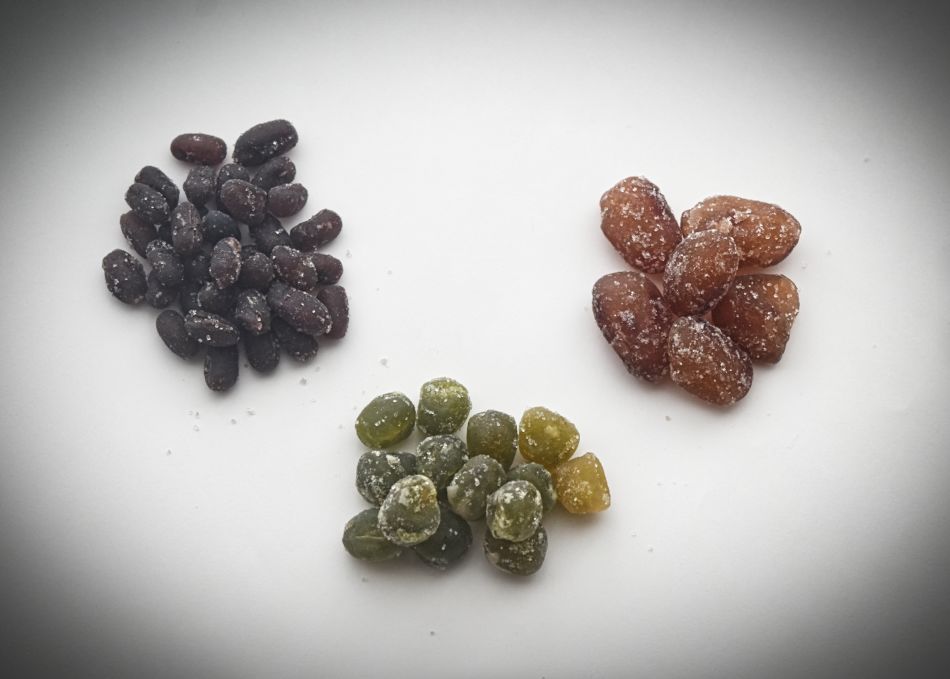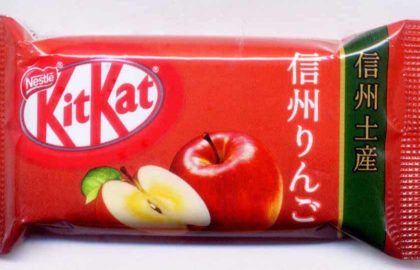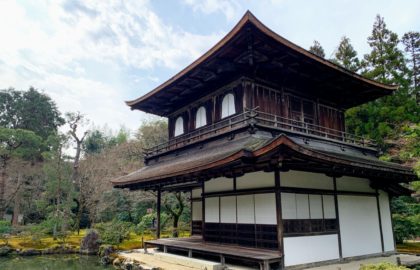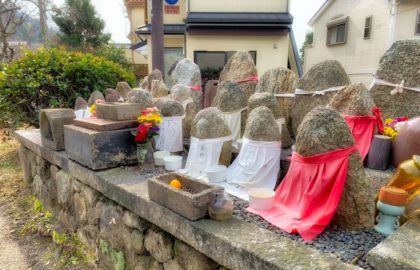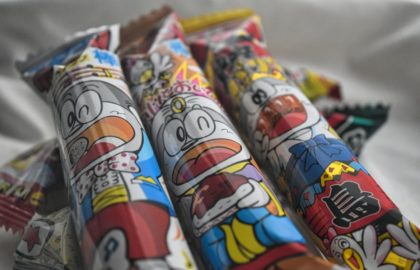甘納豆
Amanatto
Sugar Coated Beans
I first discovered Amanatto while wandering around Tsukiji Outer Market. A woman with a bright smile held up a bowl of dark-colored beans up to me and said: “Try!” I plucked one from the bowl expecting a kind of savory bar snack. I was surprised when a sweet sugared flavor blossomed in my mouth. The soft chewiness confused me, especially as the texture turned slightly grainy. “It’s sweet beans,” she explained. I was so amused by this candy that I bought a small bag to bring home.
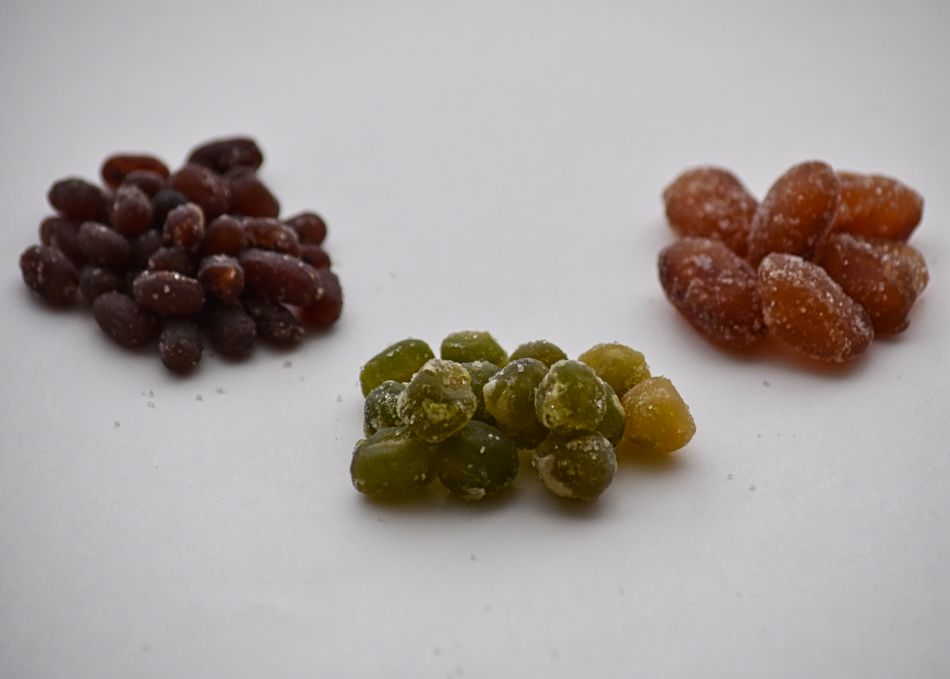
The Edo Period Treat
Originally called amananattō (甘名納糖), this confectionery was first cooked up by Hosoda Yasubei, during the 1860s at his Tokyo wagashi store, Eitaro Confectionery. Eitaro still exists today and you can visit one of several shops found in Tokyo. I highly suggest stopping by the one at Nihonbashi near Tokyo Station. You can buy all sorts of wagashi treats in addition to amanattō and marvel at a store that’s been there for roughly 200 years in the same spot!
Yasubei used azuki beans (red mung beans), cowpeas (black-eyed peas), and soramame (fava beans) to make the first amanattō. Today, amanattō is particularly popular in Japan. Although I’m told its especially associated with older generations and is regularly served during teatime.
Hokkaido’s Red Bean Rice
As a side note, throughout Japan, there is a rice dish called sekihan, where sweet sticky rice is steamed with adzuki beans. Usually, sekihan is a dish associated with celebration and is made during weddings and birthdays. Here in Hokkaido, instead of just pain adzuki beans, they’ll use amanattō instead – the result is an even sweeter rice dish.
A Simple Candy
Typically its served with green tea but is perfectly fine by itself. I have yet to cook with it Hokkaido style with steamed rice, but maybe you can try it and tell me what you think.
You can find bags amanattō in grocery stores or as boxed omiyage (souvenirs) in train stations here in Japan. I’ve seen them sold online at Amazon.co.jp, but not Amazon proper. If you can’t find it and would like to try it yourself, I’ve included a recipe below. Enjoy!
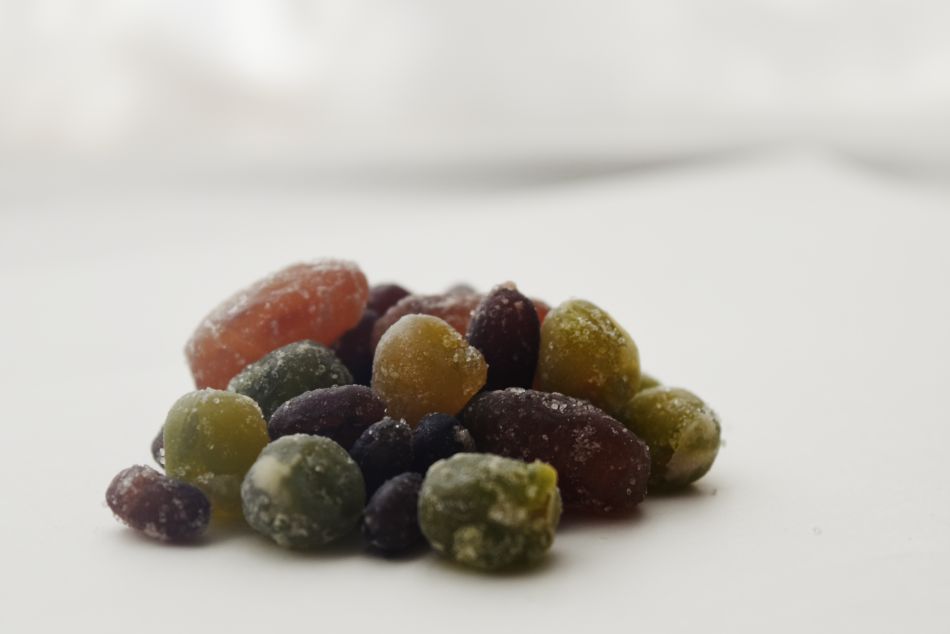
Amanattō Recipe
Ingredients for bean preparation
- 1 lb beans such as red mung beans, black beans, fava beans, or navy beans
- water, to soak and cook beans
- ½ teaspoon of baking soda
Ingredients for sugar coating the beans
- 3 cups of water
- 4 ½ cups of fine granulated sugar
- 1 teaspoon salt
- 2 cups superfine sugar
Prepare Your Beans
Rinse beans, picking out any stones, broken beans, or odd-shaped beans. Soak overnight in ample water.
After soaking, drain beans and rinse with plenty of cold water. Pick through again to get rid of any cracked, halved and beans with no skin.
Put beans in a pot with plenty of cold water – about an inch or two above the beans – and a good pinch of baking soda. The baking soda will help to maintain the color of the beans.
Simmer beans gently for 1 hour until beans are just cooked through. Be careful not to boil the beans or overcook them. The beans should tender and hold their shape, not mushy nor falling apart
Drain beans and rinse gently in cold water. Carefully sort through the cooked beans, discarding any that are out of the skin, or where the skin has cracked open. Keep in mind that this will decrease the number of beans by as much as a third depending on how carefully you cooked the beans. Save discarded beans to make a bean soup or bean salad.
Sugar Coating the Beans
Prepare sugar syrup by combining the 3 cups of cold water, granulated sugar, and salt. Simmer for 20 minutes or until the syrup is starting to thicken a bit.
Carefully add the beans to the syrup mixture and continue simmering for 1 1/2 hours. Try to stir gently and as little as possible – the goal is not to break any beans.
Turn off the heat and allow beans to cool for 10 minutes. Drain.
Put the superfine sugar into a bowl. In batches, toss the beans into the sugar and then lay them out onto a cookie sheet in a single layer.
When all the sugar-coated beans are on the cookie sheet, put the cookie sheet in an oven preheated to 175 degrees F for 5 minutes.
Remove the cookie sheet and toss the beans, returning them to the oven for an additional 5 minutes. Turn off the oven and leave the beans in the oven for 5 minutes.
Cool completely before serving or storing in an airtight container. Stored amanattō can last for about 3 to 4 days in the fridge.

